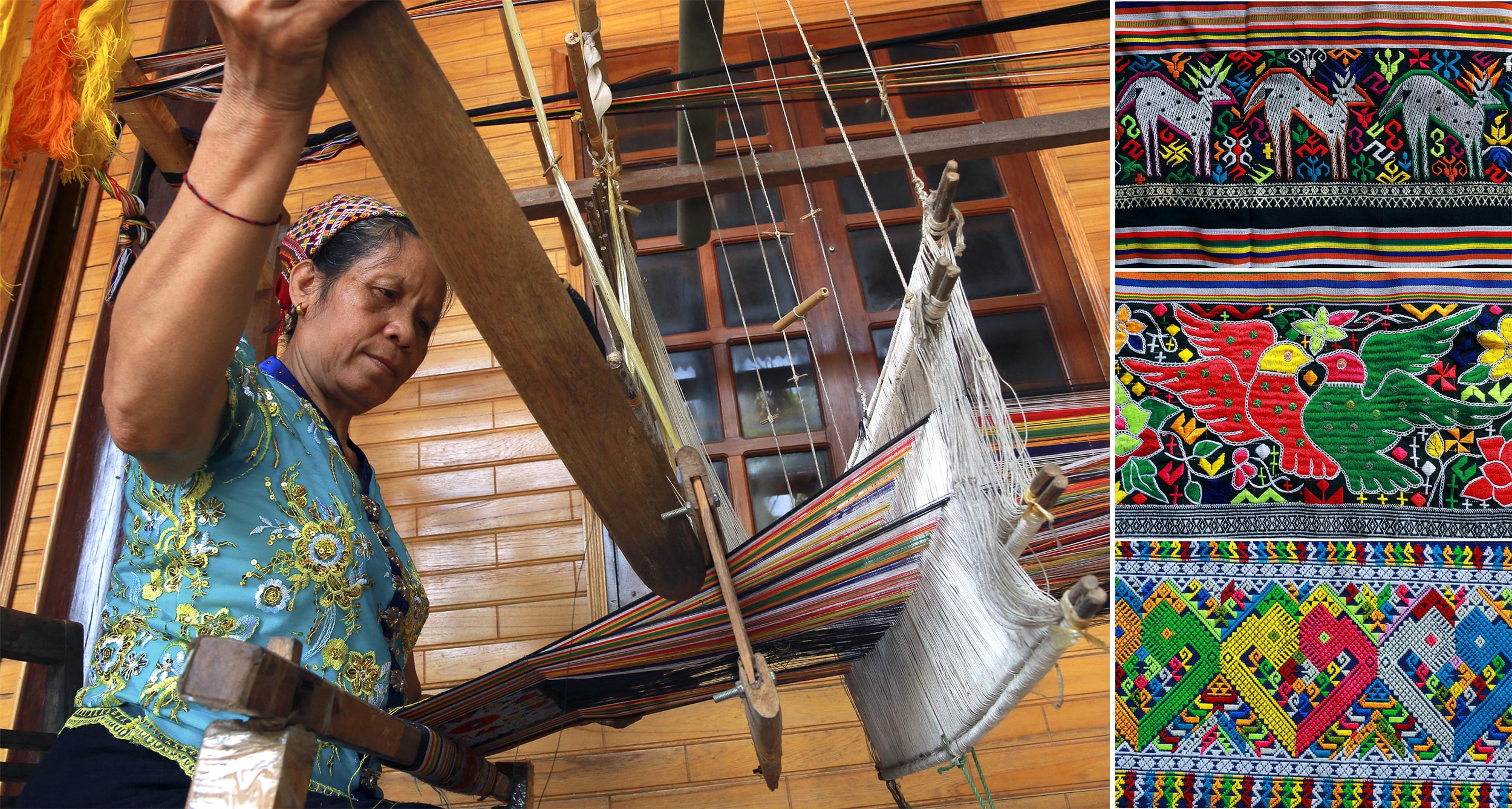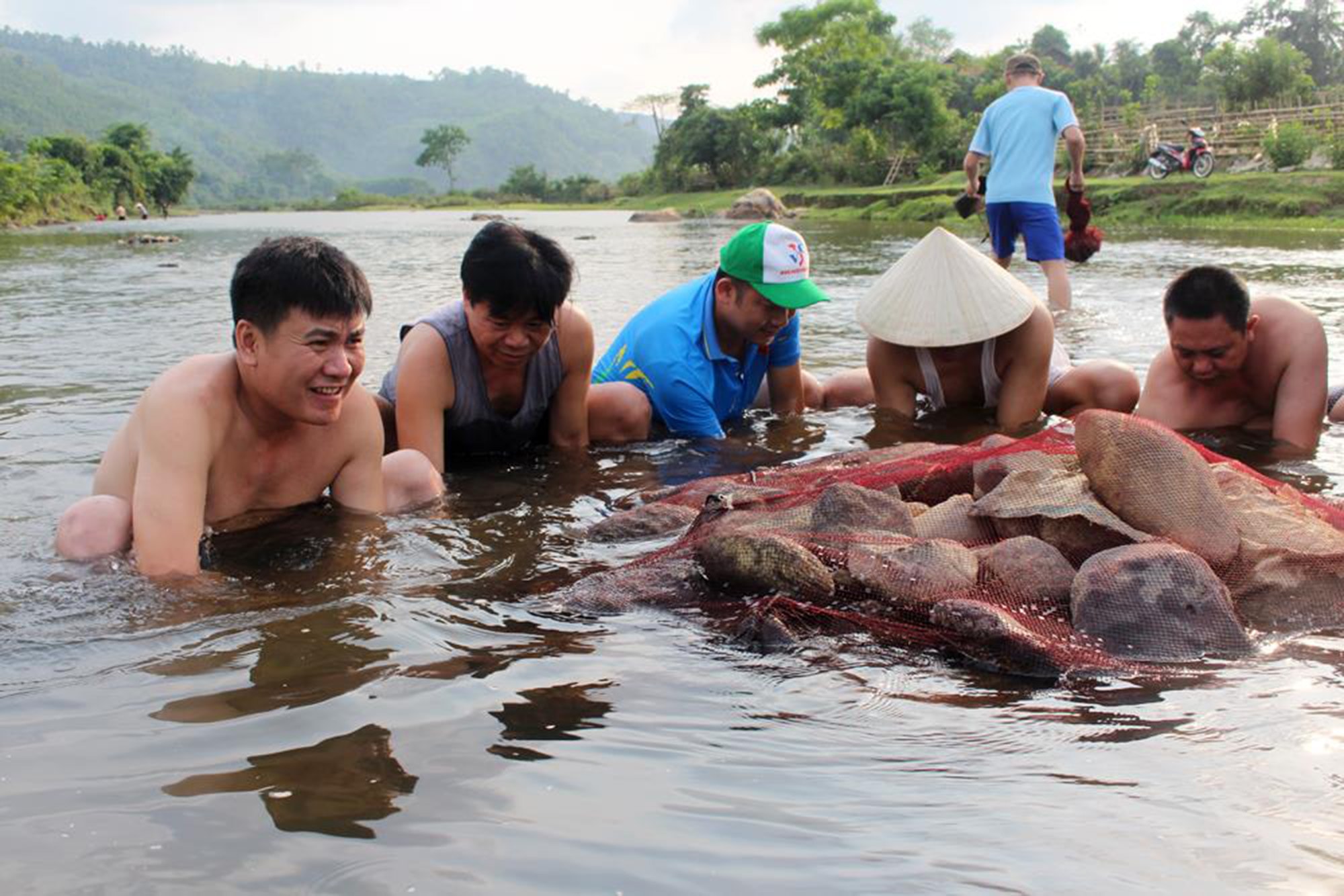Unique traditional features in Thai family life in Nghe An
(Baonghean.vn) - “Mother sits at the head of the floor spinning, spinning silk/Father sits by the window, weaving nets” - that is a typical image of Thai family life, mentioned many times in folk literature. That is why one of the first lines of the song that girls sing when they are in love with boys is often: “When you wake up and go, will our mother sit at the head of the floor spinning?/ Will our father sit by the window weaving nets?”.
 |
| Thai women are famous for their brocade weaving and embroidery. Photo: Dinh Tuan |
With self-sufficient agriculture, women have to worry about "clothing" for the family.
That typical lifestyle reflects the circumstances, conditions, and living environment of the Thai people over thousands of years. Hundreds of years ago, the Thai people migrated from the North. In the Western Nghe An region, they settled in valleys, along streams, growing rice (combined with slash-and-burn farming) and fishing… With self-sufficient agriculture, women had to take care of the “clothing” of their families.
Except when they are busy with the harvest, women are involved in growing cotton, weaving, growing mulberry trees, raising silkworms, spinning silk... They take advantage of their free time to pick cotton, dye fabric and weave brocade... It is true to the Thai proverb: "Feet in the forest, hands in the house".
Thai girls must learn from their grandmothers and mothers how to dye cotton, weave cloth, and embroider from the age of 10-11. When they reach marriageable age, they will have enough clothes, scarves, curtains, pillows, mattresses, etc. as a dowry to bring to their husband's house.
 |
| Ms. Lo Thi Lan in Mac village, Thach Giam commune (Tuong Duong) next to the brocade weaving frame; Unique brocades woven by Thai women. Photo: Dinh Tuan |
Thai men demonstrate their role as breadwinners by doing things like hunting, trapping animals, and casting nets.
Thai men are concerned with “food”, of course they also contribute to the work of slash-and-burn farming. Men demonstrate their role as the pillars of the family by doing the work that nature has given them, which is hunting, trapping animals, casting nets… First of all, men have to work on hemp fields to get fiber. From hemp fiber, they make fishing nets and nets for fishing or catching animals. Hemp fiber is also used to weave nets, scoops (binh), and nets (xoc)…
To make these tools, men must have a set of tools to “process” hemp fibers. These are tools used to strip the hemp bark to get the fibers, including a small knife, shaped like a rice leaf, with a long handle, and a spinning tool called “pan pan” with small wheels at both ends to rotate.
If weaving nets, nets, scoops, etc., you need a "hook" that looks like a bird's beak, so it's called "hua noc coc" - meaning the head of a hornbill; a flat bamboo stick longer than a hand's span to make the mesh size (large, small) and a flat, narrow wooden stick the size of a hand, about half a span long to wrap the thread...
 |
| Thai men are good at catching fish. Photo: Ba Hau |
In addition to tools for weaving nets and fishing nets, the head of the family also has to make tools for weaving. From cotton gins, cotton gins, spinning wheels, to looms… If the head of the family does not have the skills to make these things, he has to “barter” with others. In the past, if men could not make these essential items for the family, they had to bring their valuable items to exchange with others. Nowadays, there is no longer the practice of “bartering”; instead, people will spend money to buy them.
Nowadays, despite the industrial life with modern production lines, traditional handicrafts such as weaving, silk weaving, fishing nets, etc. still need to be preserved. Because that is the national cultural identity passed down by the Thai people to the next generation.

